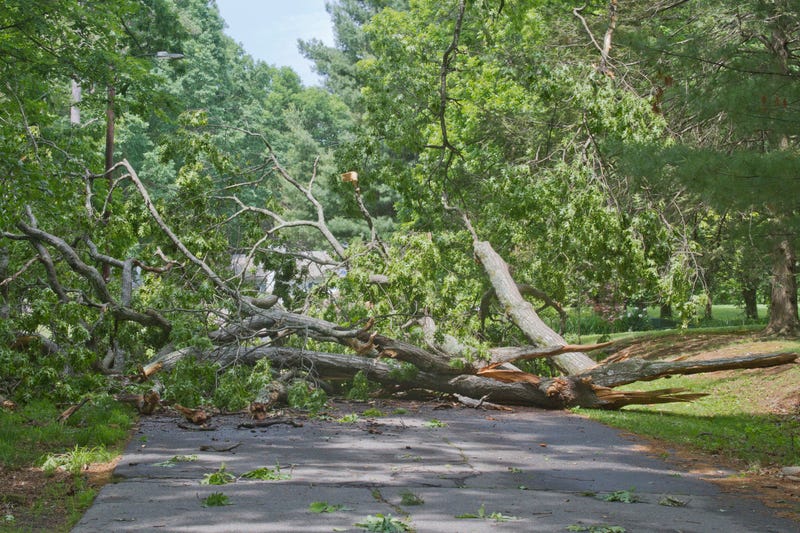
PHILADELPHIA (KYW Newsradio) — With another strong storm expected Friday night, mitigation efforts are underway in some parts of the region to reduce the danger of ash trees falling onto streets, sidewalks, cars or houses.
Vince Marrocco is the director of horticulture at the Morris Arboretum and on Whitpain Township’s Shade Tree Commission. He says ash trees in the area are mostly all dead. That’s because of the Emerald Ash Borer, a non-native green beetle first discovered in the United States in 2002. According to the Department of Agriculture, they likely arrived here in wood packing materials.
“The beetle basically gets into the trees and burrows into the bark and gurgles the wood and there is really nothing you can do to stop it,” Marrocco said.
They are responsible for the destruction of tens of millions of ash trees in 30 states, including Pennsylvania, New Jersey and Delaware.
Damaged ash trees may sometimes be hard for people to identify. They become a problem when storms roll around, which is why Marrocco says they are going to township forests and parks and removing the dead trees before they become even more unstable.
“Once a tree dies, the roots start dying right away, and the roots are what holds it down and the roots rot and you still got this really tall trunk,” Marrocco said.
“It’s subject to all of these wind shears, with no roots to support it, and they come down.”
He says that’s why it’s not uncommon to have standing deadwood come down in strong storms.
But it’s not always just deadwood that falls during storms — healthy trees can come down too.
Marrocco knows firsthand, as a couple of oaks crushed his house a few years ago.
“I can tell you with all sincerity that it’s the homeowner who is responsible for damage done to his property. It’s not where it’s rooted, it's where it lands.”
Signs your ash tree is damaged, per the Department of Agriculture:
- Yellow, thin or wilted foliage
- Unusual woodpecker presence and pecking holes
- D-shaped beetle exit holes
- Shoots growing from roots or a tree's trunk, often with larger-than-normal leaves
